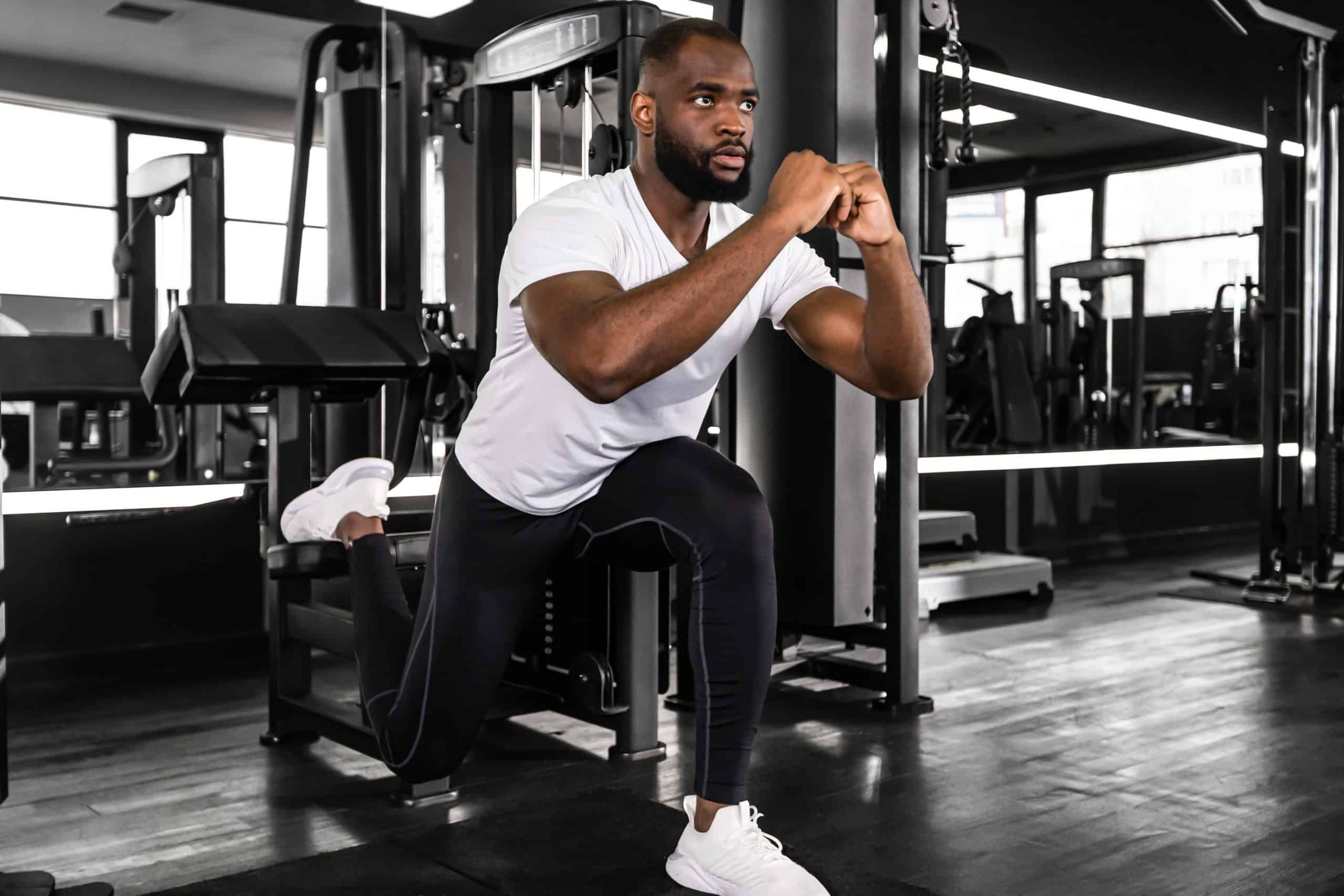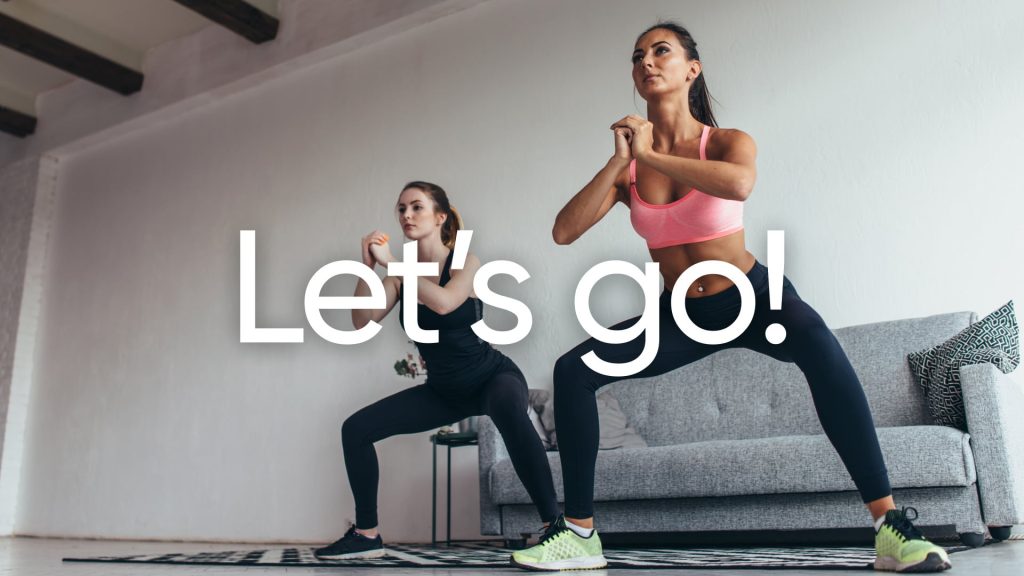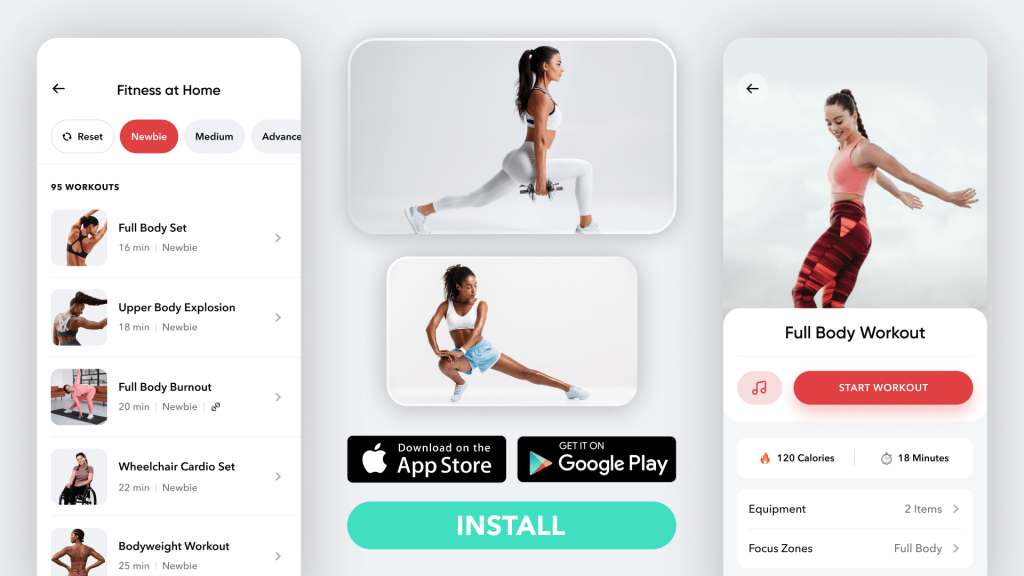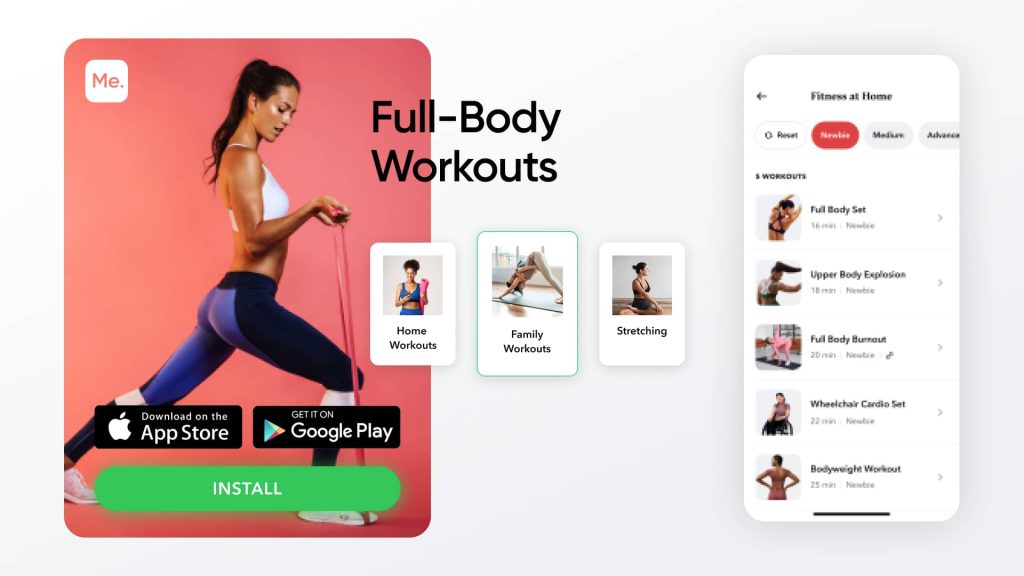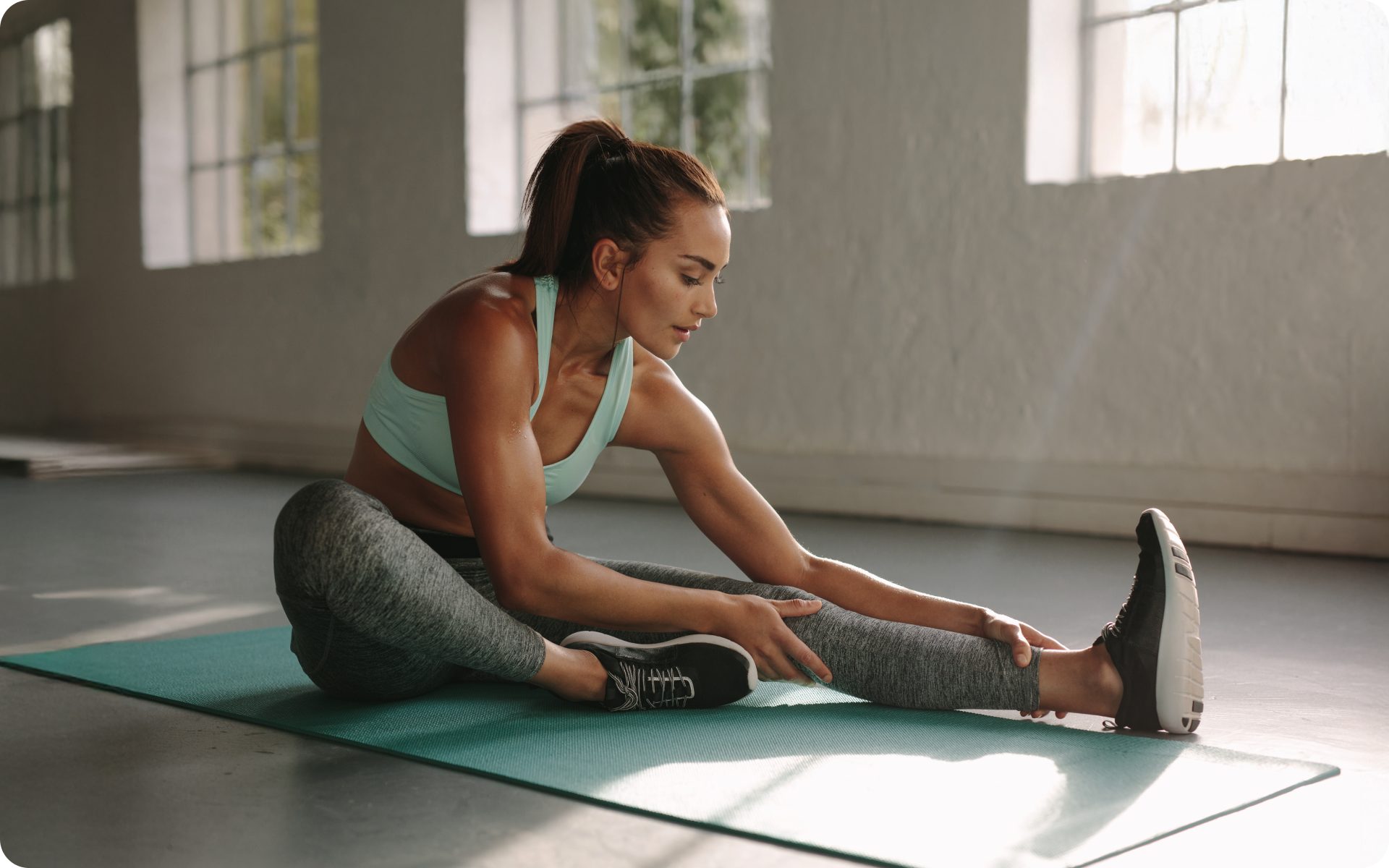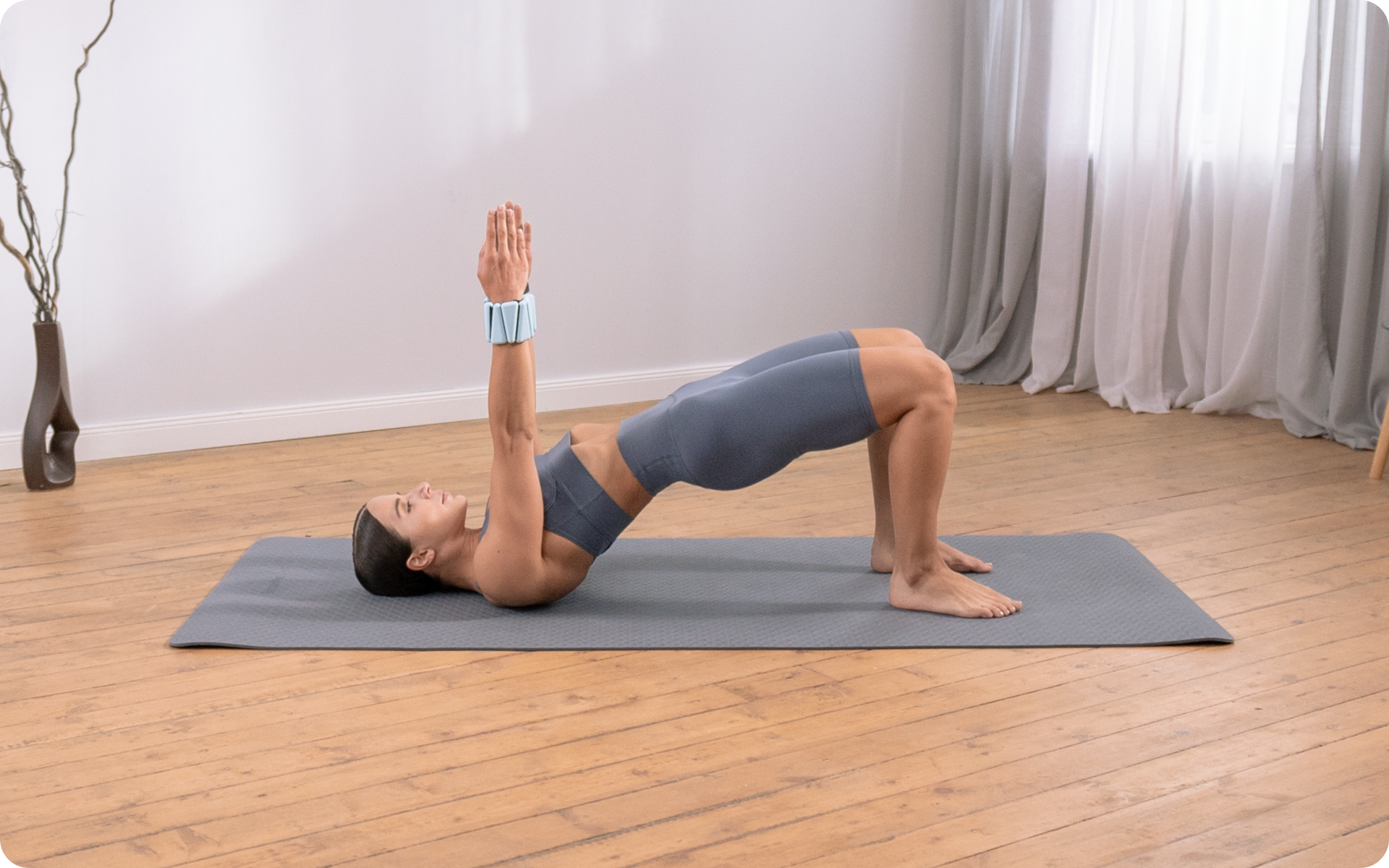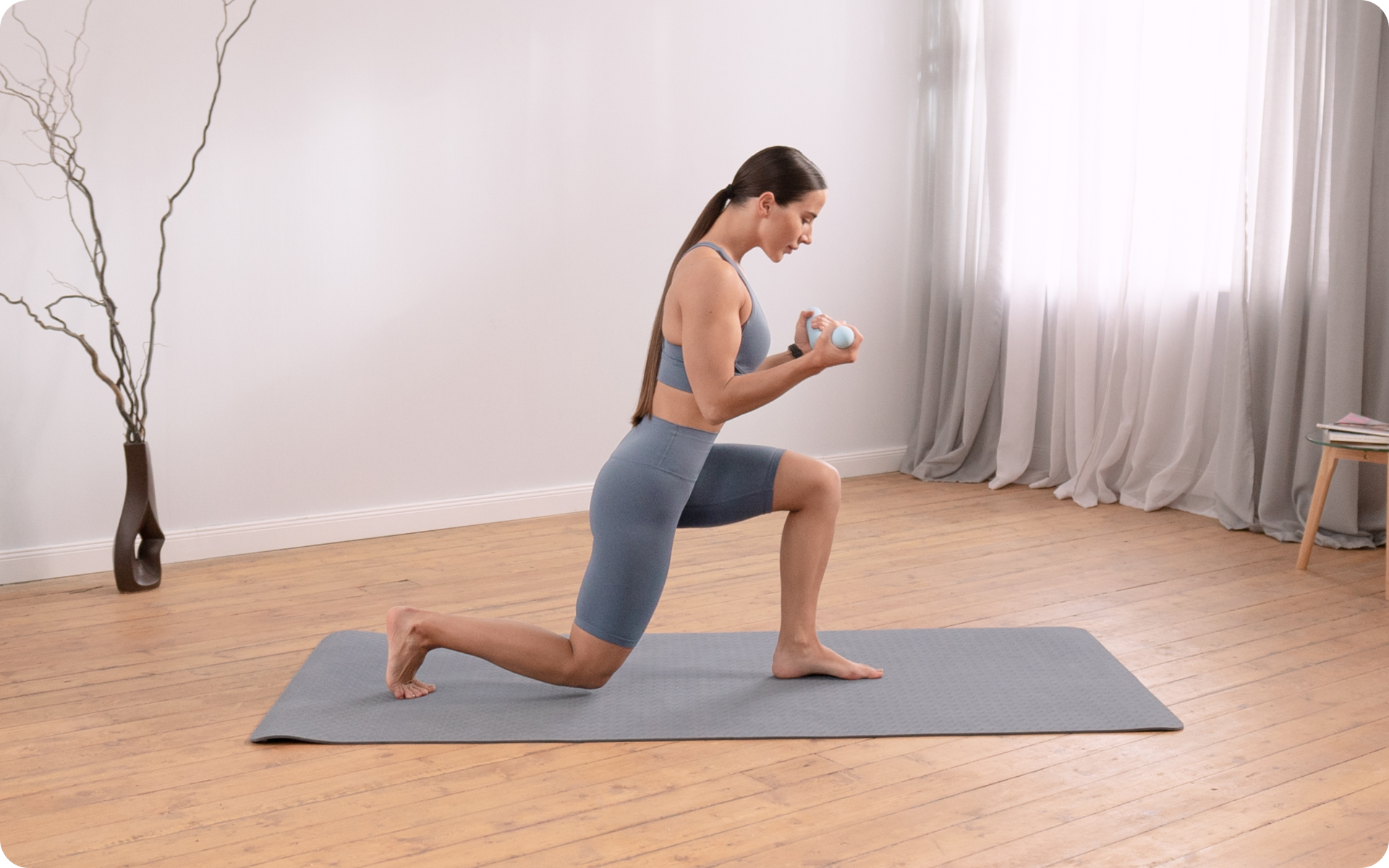The Bulgarian split squat is a highly effective lower-body exercise that has gained significant popularity in recent years. Originally developed by Bulgarian weightlifting coach Angel Spassov, this powerful movement offers a wide range of benefits, including improved leg strength, balance, and flexibility.
By targeting multiple muscle groups simultaneously, the Bulgarian split squat is an excellent addition to any fitness routine, whether you’re a seasoned athlete or just starting out.
In this comprehensive guide we will delve into the specific muscles worked during the Bulgarian split squat, as well as provide detailed instructions on proper form and technique to ensure optimal activation and results.
Our goal is to equip you with the knowledge and tools necessary to incorporate this versatile exercise into your training regimen, allowing you to reap its many rewards and elevate your overall fitness level.
Do Bulgarian Split Squats Build Muscle?
Yes, Bulgarian split squats are an excellent exercise for building muscle in the lower body. This compound movement targets multiple muscle groups simultaneously, leading to increased muscle activation and growth.
Incorporating Bulgarian split squats into your routine can help you achieve stronger, more defined legs and glutes.
How Bulgarian Split Squats Build Muscle
The effectiveness of Bulgarian split squats in building muscle can be attributed to several factors:
1. Muscle Activation
Bulgarian split squat muscles workout involves a high level of muscle activation, particularly in the quadriceps, hamstrings, and gluteal muscles (4). By engaging these large muscle groups, Bulgarian split squats stimulate muscle growth and development.
2. Unilateral Exercise
As a single-leg exercise, Bulgarian split squats require each leg to work independently, resulting in improved muscular balance and reduced risk of injury. The unilateral nature of this exercise also helps to correct muscle imbalances and promote symmetrical muscle development.
Read More: How Many Sit-Ups A Day Will Sculpt Envy-Inducing Abs Or A Perfectly Flat Stomach
3. Progressive Overload
To build muscle effectively, it’s essential to progressively increase the resistance or load used during an exercise (7).
Bulgarian split squats allow for easy resistance adjustment, either by adding weight (using dumbbells, kettlebells, or a barbell) or by increasing the difficulty of the movement (elevating the rear foot or adjusting the stance).
Bulgarian split squats for glutes are particularly effective at targeting the gluteal muscles and hamstrings. By maintaining proper form and emphasizing the hip hinge movement, you can effectively activate and strengthen the glutes during this exercise.
There are several variations of the Bulgarian split squat muscles exercises that can be incorporated into your workout routine to target different muscles and provide additional challenges:
- Standard Bulgarian split squat: The classic version of the exercise, focusing on the quadriceps, hamstrings, and glutes.
- Bulgarian split squat with lateral raise: Incorporates an upper body component by adding a lateral raise with dumbbells, targeting the shoulders and upper back.
- Bulgarian split squat with overhead press: Combines the lower body movement with an overhead press using dumbbells, engaging the deltoids and triceps.
In addition to building muscle, Bulgarian split squats offer numerous other benefits:
- Improved balance and stability
- Enhanced mobility and flexibility in the hips and ankles
- Reduced risk of injury due to unilateral training and muscle balance
- Increased core strength and stability, as the exercise requires engagement of the abdominal muscles for balance
By targeting multiple muscle groups and offering various benefits, this versatile movement should be a staple in any strength training program.
Bulgarian Split Squat Muscles Worked
The Bulgarian split squat is a single-leg exercise performed with one foot elevated at the rear on a bench or step. The movement involves lowering the body into a lunge position, with the front knee bent and the back knee approaching the ground.
The exerciser then pushes back up to the starting position, primarily using the muscles of the front leg. This motion places significant emphasis on the quadriceps, hamstrings, and gluteal muscles, while also engaging the core and stabilizing muscles throughout the movement.
Major Muscles Worked
Quadriceps
Located at the front of the thigh, the quadriceps are the primary movers during the Bulgarian split squat. They consist of four muscles – the rectus femoris, vastus lateralis, vastus medialis, and vastus intermedius (2). These muscles work together to extend the knee and provide power for the upward phase of the exercise.
Hamstrings
At the back of the thigh, the hamstrings consist of three muscles – the biceps femoris, semitendinosus, and semimembranosus (1).
During the Bulgarian split squat, the hamstrings serve as synergists, assisting the quadriceps in extending the knee and controlling the descent of the movement.
Reasons why BetterMe is a safe bet: a wide range of calorie-blasting workouts, finger-licking recipes, 24/7 support, challenges that’ll keep you on your best game, and that just scratches the surface! Start using our app and watch the magic happen.
Gluteal Muscles
Composed of the gluteus maximus, gluteus medius, and gluteus minimus, the gluteal muscles play a crucial role in the Bulgarian split squat (6).
The gluteus maximus is the primary hip extensor, working with the hamstrings to drive the body upward. The gluteus medius and minimus provide stability and help maintain proper alignment throughout the exercise.
Minor Muscles Worked
Core Muscles
The rectus abdominis, transverse abdominis, and obliques are engaged during the Bulgarian split squat to provide stability and maintain balance. These muscles help maintain a neutral spine and prevent excessive movement in the torso.
Hip Flexors
The iliopsoas and rectus femoris contribute to hip flexion during the Bulgarian split squat, allowing the exerciser to lower their body into the lunge position.
Adductors
Located on the inner thigh, the adductor muscles (adductor magnus, adductor longus, and adductor brevis) work to stabilize the hip joint and maintain proper alignment during the exercise (5).
Stabilizing Muscles
The calf muscles (gastrocnemius and soleus) and ankle stabilizers (tibialis anterior and peroneals) provide stability and support during the Bulgarian split squat, helping the exerciser maintain balance throughout the movement.
Read More: 20 Of The Best Exercises To Lose Thigh Fat While Targeting Different Thigh Muscles
Are Bulgarian Split Squats For Quads Or Glutes?
Bulgarian split squats are an effective exercise for targeting both the quads and glutes.
While the quadriceps (front thigh muscles) are the primary muscles in this exercise, responsible for extending the knee during the upward phase, the gluteal muscles (glutes) also play a significant role in the movement.
The glutes, particularly the gluteus maximus, work in conjunction with the hamstrings to extend the hip during the exercise. By driving the body upward from the lunge position, the glutes contribute significantly to the overall movement.
Changing leg placement while performing the Bulgarian split squat can affect which muscle is targeted more during the exercise. The position of your front leg and rear leg can shift the emphasis between the quadriceps and the gluteal muscles.
- Front Leg Placement: If you place your front foot further forward from your body, it will increase the activation of the gluteal muscles and hamstrings due to a greater hip hinge.
Conversely, if your front foot is closer to your body, the exercise will place more emphasis on the quadriceps.
- Rear Leg Placement: Adjusting the height of the rear leg’s elevation can also affect muscle activation.
A higher elevation may increase the stretch in the hip flexors and slightly increase glute activation. However, you need to find a comfortable height that allows for proper form and does not strain the lower back or hip flexors.
Keep in mind that maintaining proper form is crucial for ensuring the effectiveness of the exercise and reducing the risk of injury.
Make sure to adjust leg placement gradually and pay attention to your body’s feedback to find the most suitable position for targeting the desired muscle group.
Which Leg Is Working In Bulgarian Split Squat?
In a Bulgarian split squat, the leg that is working the most is the front leg. The front leg bears the majority of the body weight and is responsible for the primary movements of the exercise, such as knee extension and hip extension.
The quadriceps, hamstrings, and gluteal muscles of the front leg are engaged to perform the squat motion and drive the body back up to the starting position.
While the rear leg is elevated on a bench or step and plays a supporting role in maintaining balance and stability, it does not contribute significantly to the force generation during the exercise. However, the hip flexors and stabilizing muscles of the rear leg are still engaged to some extent, helping you maintain proper form throughout the movement.
Are Bulgarian Split Squats More Effective Than Squats?
It is not accurate to say that Bulgarian split squats are universally more effective than regular squats, as the effectiveness of an exercise depends on an individual’s goals, preferences, and physical abilities.
Both exercises have their unique advantages and can be incorporated into a well-rounded fitness program (3).
Below is a Bulgarian split squat vs squat comparison to help you make a decision:
Bulgarian Split Squats
1. Unilateral Movement
Bulgarian split squats are a single-leg exercise that helps address muscle imbalances and improve overall stability. This unilateral nature of the exercise promotes symmetrical muscle development and reduces the risk of injury.
BetterMe app will provide you with a host of fat-frying fitness routines that’ll scare the extra pounds away and turn your body into a masterpiece! Get your life moving in the right direction with BetterMe!
2. Greater Muscle Activation
Bulgarian split squats provide a higher degree of muscle activation in the quadriceps, hamstrings, and glutes compared to regular squats (3). This increased activation can lead to better muscle development and hypertrophy.
3. Improved Mobility And Flexibility
The exercise requires a greater range of motion, which can help improve hip and ankle mobility and flexibility.
4. Less Spinal Loading
Since the overall load placed on the spine is lower in Bulgarian split squats as compared to regular squats, this exercise may be more suitable for individuals with lower back issues.
Regular Squats
1. Total Body Workout
Regular squats are a compound movement that engages multiple muscle groups throughout the body, including the lower back, abdominals, and upper back muscles, making it an effective total body workout (8).
2. Higher Load Capacity
Regular squats allow for heavier loads, which can contribute to increased overall strength and power development.
3. Easier For Beginners
Regular squats are generally easier for beginners to learn and perform with proper form, as they require less balance and coordination compared to Bulgarian split squats.
Frequently Asked Questions
Q: What Muscles Does Bulgarian Split Squat Work?
A: Bulgarian split squat primarily works the quadriceps (front thigh muscles), hamstrings (back thigh muscles), and gluteal muscles (glutes). It also engages the core muscles for stability and balance (4).
Q: Are Bulgarian Split Squats Good?
A: Yes, Bulgarian split squats are an effective exercise for building strength, and muscle definition, and improving balance and mobility in the lower body. The muscles used in Bulgarian split squats make it a valuable addition to any fitness program.
Q: How Many Bulgarian Squats Should I Do?
A: The number of Bulgarian squats you should perform depends on your fitness level and goals.
Generally, performing 3-4 sets of 8-12 reps per leg is a good starting point for muscle growth and strength development. However, you can adjust the volume and intensity based on your specific needs and progression.
Q: Is 3 Sets Of Bulgarian Split Squats Enough?
A: For most individuals, 3 sets of Bulgarian split squats can be enough to effectively target the lower body muscles, provided that each set is performed with proper form and adequate intensity. However, depending on your goals, you may need to adjust the number of sets, reps, or load to ensure optimal progress and results.
The Bottom Line
Bulgarian split squats are a highly effective lower body exercise that targets the quadriceps, hamstrings, and gluteal muscles, as well as engaging the core and stabilizing muscles. This exercise offers several benefits, including improved strength, muscle definition, balance, and mobility.
Incorporating Bulgarian split squats into your fitness routine can help address muscle imbalances and contribute to overall functional fitness. However, it’s essential to use proper form and technique and adjust the volume, intensity, and leg placement based on your individual goals and abilities for optimal results.
DISCLAIMER:
This article is intended for general informational purposes only and does not serve to address individual circumstances. It is not a substitute for professional advice or help and should not be relied on for making any kind of decision-making. Any action taken as a direct or indirect result of the information in this article is entirely at your own risk and is your sole responsibility.
BetterMe, its content staff, and its medical advisors accept no responsibility for inaccuracies, errors, misstatements, inconsistencies, or omissions and specifically disclaim any liability, loss or risk, personal, professional or otherwise, which may be incurred as a consequence, directly or indirectly, of the use and/or application of any content.
You should always seek the advice of your physician or other qualified health provider with any questions you may have regarding a medical condition or your specific situation. Never disregard professional medical advice or delay seeking it because of BetterMe content. If you suspect or think you may have a medical emergency, call your doctor.
SOURCES:
- Anatomy, Bony Pelvis and Lower Limb, Hamstring Muscle (2023, ncbi.nlm.nih.gov)
- Anatomy, Bony Pelvis and Lower Limb: Thigh Quadriceps Muscle (2023, ncbi.nlm.nih.gov)
- Biomechanical Differences Between the Bulgarian Split-Squat and Back Squat (2021, ncbi.nlm.nih.gov)
- Muscle activity of Bulgarian squat. Effects of additional vibration, suspension and unstable surface (2019, journals.plos.org)
- Muscles in the Medial Compartment of the Thigh (2022, teachmeanatomy.info)
- Muscles of the Gluteal Region (2022, teachmeanatomy.info)
- Progressive overload without progressing load? The effects of load or repetition progression on muscular adaptations (2022, ncbi.nlm.nih.gov)
- The Muscles Used in Squats – Squat Biomechanics Explained (n.d., blog.nasm.org)
